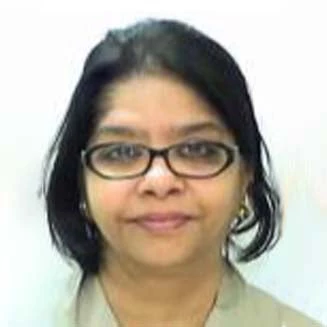 Students at Al-Yaqeen Nursery and Primary School, Suleja village, Niger State. Photo: Arne Hoel / World Bank
Students at Al-Yaqeen Nursery and Primary School, Suleja village, Niger State. Photo: Arne Hoel / World Bank
Measuring the progress made toward reaching poverty reduction goals is key to informing policymakers at the national and international level. But properly measuring the changes in poverty reduction at different points in time requires using the same comparable household welfare indicators . Because household welfare measures are continually being improved by statistical offices around the world – sometimes with technical assistance from organizations including the World Bank – there is continuous adjusting of questionnaires, refining of sampling, and enhancing implementation protocol. Measuring poverty trends under these circumstances can be challenging.
In our new paper, we address these challenges when estimating a poverty trend for Nigeria between 2009 and 2019. Although frequent and comparable welfare data were not available for Nigeria during this period, we were able to leverage the richness of several other data sources to “impute” a poverty trend. Given Nigeria’s size and the fact that about 4 in 10 Nigerians live in extreme poverty, efforts to track poverty were important at the country, regional and global levels.
In 2020 - after almost a decade- the Nigerian National Bureau of Statistics (NBS) released the first official poverty estimates in the country, calculated by using high-quality consumption data from the 2018-19 Nigerian Living Standards Survey (NLSS). The previous official poverty estimates for Nigeria were based on the 2009-10 Harmonised Nigerian Living Standards Survey (HNLSS). But given crucial differences in the methodology used to collect consumption data – especially food consumption data – and concerns around data quality in the 2009-10 survey, it was not technically possible to estimate a poverty trend for Nigeria comparing the data between these two surveys.
To overcome this challenge, we used survey-to-survey imputations to estimate a poverty trend for Nigeria for the decade leading up to the 2018-19 survey . Survey-to-survey imputations can be a powerful tool when data are limited, provided that several underlying assumptions hold. For example, the non-monetary indicators used to impute consumption need to be strongly correlated with monetary poverty, as well as being comparable in the survey where the imputation model is constructed (the “baseline survey”) and the survey being imputed (the “target survey”).
Fortunately, we were able to check if these assumptions held with the availability of four sets of data from Nigeria’s General Household Survey (GHS) for the decade leading up to the 2018-19 NLSS, thus laying solid foundations for survey-to-survey imputations. The GHSs – conducted in 2010-11, 2012-13, 2015-16, and 2018-19 – collected household-level information on key non-monetary indicators in exactly the same way as in the 2018-19 NLSS, see Figure 1 (differences are however present in how the household consumption measure is collected in the two surveys making the GHS household consumption data not suitable for poverty measurement purposes, see the paper and this document for further details). Not only did the two surveys have identical questionnaires for these non-monetary indicators, but they were also collected by the same team and following the same approach as part of an ongoing NBS-World Bank collaboration. This minimized any discrepancies driven by survey methodology and implementation between the 2018-19 NLSS and the GHSs. By comparing the 2018-19 NLSS estimate with the 2018-19 imputed GHS estimate, we were able to check whether this was indeed the case. The timing of data collection for the 2018-19 NLSS and the 2018-19 GHS overlapped, so it was possible to test whether the imputed consumption and poverty estimates were well aligned with official consumption and poverty estimates from a similar period. For 2018-19 the GHS imputed poverty headcount rate is 41.9, as shown in Figure 2. This is very close to the official NLSS-based poverty headcount rate for 2018-19 of 39.1 percent (see the paper for a technical explanation of the small gap between the two estimates).
Figure 1 Summary Statistics of indicators used to predict consumption in survey-to-survey imputations, by GHS wave, and comparison with 2018/19 NLSS indicators.

Note: The figure shows the average value of each indicator in each wave of the GHS. These non-monetary indicators are used to develop the consumption model used in the survey-to-survey imputations for each wave. The first series in the figure shows the average value of each indicator in the 2018/19 NLSS for comparison purposes.
The survey-to-survey imputations were done in three steps:
-
First, a set of comparable non-monetary indicators that are available in both the NLSS and GHS were selected;
-
Second, the relationship between consumption and the selected non-monetary variables was estimated using the 2018-19 NLSS data yielding a “consumption model” (see the paper for more details on the explanatory variables used); and
-
Third, using the parameters in this consumption model, consumption was imputed into the GHSs (using 100 imputations), converted to US$2011 PPPs, and the corresponding poverty rates at the international poverty line were calculated.
Our findings show (see Figure 2) that poverty reduction stalled in the decade prior to COVID-19 . Although poverty reduction progressed slowly in the first half of the 2010s, it reversed after the 2016 recession, sparked by the collapse in global oil prices . This differed drastically when comparing the 2009-10 HNLSS with the 2018-19 NLSS, which suggested instead that the extreme poverty rate dropped by more than 17 percentage points.
Figure 2 Comparison of imputed and backcasted poverty rates for the period 2009-2019

Note: The figure compares the different results of this analysis over the decade 2009-2019. The backcasted series uses sectoral GDP growth rates to backcast household consumption from the 2018/19 NLSS using the household’s head sector of employment to map macro and micro-data. The imputed series use survey-to-survey imputations, with data from 2018-19 NLSS the GHS to impute consumption in each of the GHS survey years.
The results of the survey-to-survey imputations are validated in two main ways. First, the imputation results are similar to those of a “backcasting” exercise (see Figure 2). This exercise maps macro-data on sectoral GDP growth to micro-data on consumption in the 2018-19 NLSS using the household head’s employment sector to estimate consumption in previous years (see the paper for further details). Despite the two methods having totally different sets of underlying assumptions, they both suggest that poverty reduction in Nigeria stagnated in the 2010s. Second, many non-monetary welfare indicators from Nigeria’s Demographic and Health Survey (DHS) – including education and basic infrastructure – also showed little improvement in the 2010s.
Despite the advantages of these survey-to-survey imputations for estimating Nigeria’s poverty trend, regularly collecting comparable data on household consumption remains vital . The imputations are only possible in this instance given an extremely conducive data environment in Nigeria, and more specifically, given the availability of regularly collected data in the GHS. Nevertheless, it is better to have direct estimates of household monetary welfare – with trends as well as snapshots – that provide precise and timely information on poverty dynamics, rather than resorting to more complex approaches that rely on several assumptions. This is particularly important in times of economic crises and uncertainty – like COVID-19 and the current conflict in Ukraine – to be able to rapidly roll out effective policies to support the poor and vulnerable.




Join the Conversation